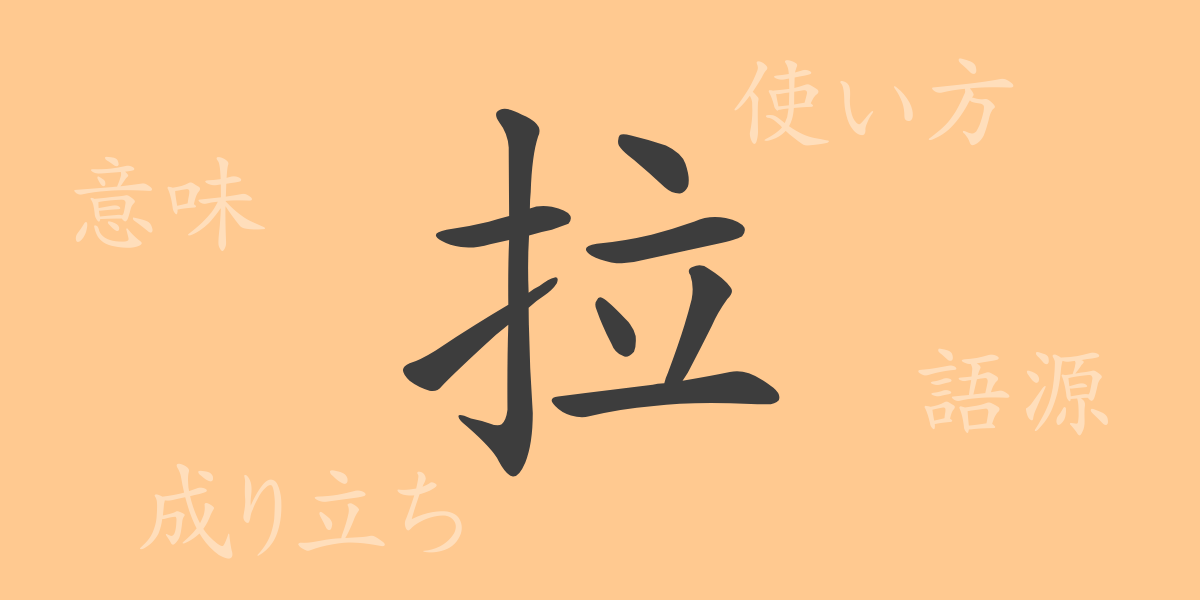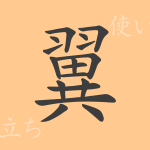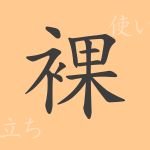Kanji (かんじ) are keys that unlock meanings and histories through their shapes. One of the commonly used kanji in Japan, “拉” (ら), is no exception. What kind of background is hidden in this kanji that we casually use? In this article, we will provide a detailed explanation of the origin, meaning, usage, readings, and idioms and phrases that include “拉” (ら). Let’s explore the world of “拉” (ら) together while appreciating the profoundness of the Japanese language.
Origin of 拉 (ら)
“拉” (ら) is a kanji that originated from ancient China, with its original form believed to be “拉” (ら). This character represents the act of pulling something with hands, depicting a person pulling a rope or cord. Over time, it has been simplified to its current form “拉” (ら). This evolution shows how kanji have developed to be written more efficiently.
Meaning and Usage of 拉 (ら)
“拉” (ら) has the basic meaning of “to pull” or “to tug.” It can also be extended to mean “to lead” or “to involve.” In actual usage, it can be seen in compounds like “拉致” (らち) and “拉弓” (らきゅう). “拉致” (らち) means “to abduct someone forcibly,” and “拉弓” (らきゅう) means “to draw a bow.” These examples show that “拉” (ら) is used in many contexts related to the act of pulling.
Readings, Stroke Count, and Radical of 拉 (ら)
Understanding the readings and structure of the kanji “拉” (ら) is also important.
- Readings: The on’yomi (音読み) is “ラ” (ら), and the kun’yomi (訓読み) is “ひく” (ひく).
- Stroke Count: “拉” (ら) has a total of 8 strokes.
- Radical: The radical is “扌” (てへん), which is often used in kanji related to hands.
Idioms, Phrases, and Proverbs Using 拉 (ら) and Their Meanings
Idioms and phrases that include “拉” (ら) showcase the richness of Japanese expressions. Here are a few examples:
- 拉致 (らち): Abducting someone forcibly.
- 拉枯 (らこ): Pulling out with great force. Figuratively, it means to seize by force.
- 拉麺 (らーめん): Noodles made by stretching dough. A type of Chinese cuisine, known as ramen in Japan.
These idioms and phrases follow the basic meanings of “拉” (ら) such as “to pull” or “to tug,” and are used in various contexts.
Summary of 拉 (ら)
Each kanji carries a deep history in its shape and meaning. “拉” (ら) is no exception. Representing the act of pulling or tugging, this kanji is used in various forms within the Japanese language, expanding the range of expressions. Words like “拉致” (らち) and “ラーメン” (らーめん) are closely related to our daily lives, reaffirming the importance of “拉” (ら). Through this exploration, we hope to provide an opportunity to re-examine the stories and meanings embedded in each kanji and rediscover the richness of the Japanese language.

























